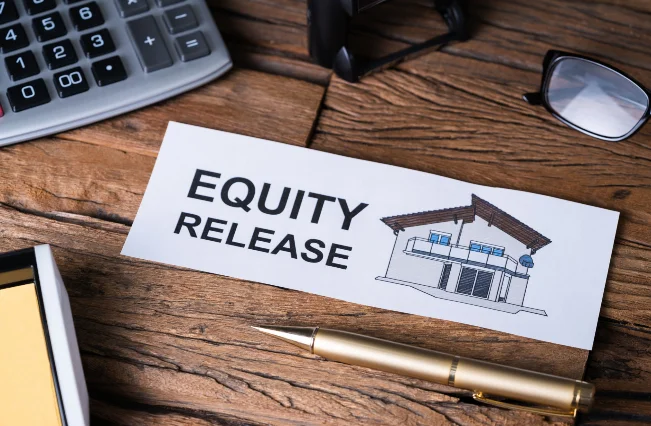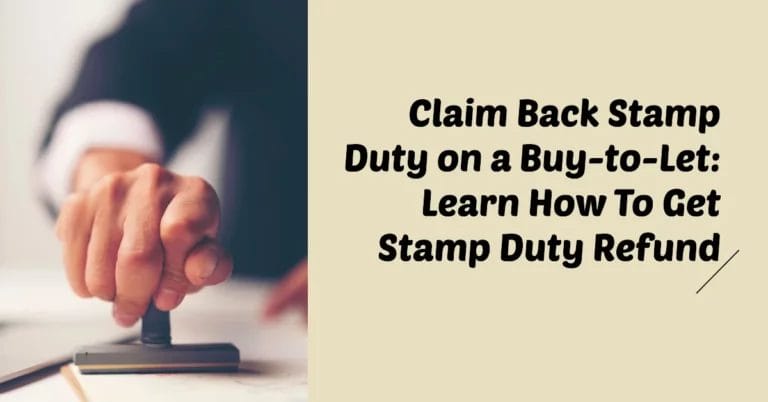From Confusion to Clarity: Equity Release For Buy To Let Explained In Simple Terms
Equity release for buy to let is an effective way for property owners to unlock the capital they have built up while making mortgage payments. This capital is provided in the form of a tax-free loan, which can assist in creating more assets.
This article will explain the complex subject of BTL equity release in a simple and straightforward manner.
Before we start, it is important to clarify the two types of buy-to-let equity release. Releasing equity from a buy-to-let is distinct from an equity-release mortgage on a buy-to-let.
Equity release on a buy-to-let is a process where an individual over 55 can access the capital they have accumulated on their property over the years. This can either be a lump sum or a monthly payment, depending on the client’s needs. Equity release specialists deal with these products, whereas mortgage brokers are usually CeMAP-qualified.
Releasing equity from a buy-to-let mortgage, on the other hand, is a traditional way of releasing equity from a buy-to-let property, regardless of age or retirement status.
In this article, we will focus on releasing equity from a buy-to-let. However, it is important not to confuse it with an equity-release buy-to-let mortgage. If you require assistance with equity-release buy-to-let mortgage for those over 55, please contact us, and we will refer you to one of our affiliated companies.
What Does It Mean When You Release Equity on a Buy-to-let?
Releasing equity on a buy-to-let means that if you own a buy-to-let and have built-up equity in the property, you can access this equity and use the money for various purposes such as additional property purchases or home improvements.
How Do You Release Equity on a Buy-to-let Mortgage?

There are three main ways to release equity on a buy-to-let mortgage.
Can You Release Equity on a Buy-to-let Property?
The general rule in the current market is that you will be able to borrow up to 75% of the market value of the buy-to-let property. However, some factors, such as the rental stress test, may prevent this. Nevertheless, the majority of our clients are able to borrow up to 75% of the property’s market value.
Releasing Equity on a Buy to Let: Eligibility Criteria
When releasing equity on a buy-to-let mortgage, several eligibility criteria must be met:
- A good credit score can help clients release the maximum amount at competitive rates.
- Although existing income is beneficial, many lenders offer this type of product with no minimum income requirement.
- The property must be structurally sound and suitable for lending purposes, and one of the biggest factors in releasing equity for buy-to-lets is the rental potential of the subject property.
- The rental income must pass the stress test, and lenders often require sight of the assured short-hold tenancy. For further discussion about eligibility criteria for releasing equity on buy-to-let properties.
- Please call one of our expert mortgage brokers.
How Much Equity Can You Release From a Buy-to-let?
It is possible to release up to 75% of the market value from existing buy-to-let properties. The exact amount that can be released depends on several factors:
- The current worth of the property
- Owner’s age
- The amount of equity they have built up
It is straightforward that a higher-valued property will allow for the release of more equity. However, most providers take the homeowner’s age into consideration when calculating the amount of equity that can be released. Older homeowners can generally release more equity from a buy-to-let property.
Pros and Cons of Releasing Equity on Buy to Let
The most obvious advantage of releasing equity through buy-to-let is the access to extra funds. This typically gives an individual more financial freedom to spend on various options.
However, the drawback of raising extra funds is that the monthly payments will increase. The client will need to make plans for how they will repay the additional funds borrowed. For more information on the best options to pay off the mortgage at the end of the term, please call one of our expert mortgage brokers.
Buy-to-let Equity Release: Risks and Downsides
While accessing the capital tied up in your buy-to-let property can seem appealing, there are some potential risks and downsides to keep in mind before going ahead with equity release.
One key risk is falling property prices. If the market takes a downturn after you have released a large amount of equity, this could put you in negative equity where the mortgage debt exceeds the property’s value. This makes it harder to sell or remortgage in the future. Some lifetime mortgage products protect against negative equity, but most standard mortgages do not.
As a landlord, periods of rental voids are another hazard. If your property sits empty for any length of time, you will still need to keep up with mortgage payments without rental income coming in. Equity release could make it harder to cover costs during voids. Checking with your equity release provider that rental voids are allowed is important.
It’s also wise to think about potential interest rate rises. If rates increase significantly over your equity release plan term, your monthly payments could become unaffordable. Going for fixed rates when interest rates are low can mitigate this risk.
Releasing too much equity too soon might not leave enough for future needs. As a lifetime mortgage, you only get one chance to access equity so carefully calculate your requirements.
Finally, equity release reduces the value of your estate and the potential inheritance for beneficiaries. Consulting family members before going ahead is advisable.
Overall, while equity release offers short-term gain, the long-term consequences need careful thought, especially for buy-to-let landlords. Discussing the pros, cons, and risks fully with an equity release advisor can give you the full picture before committing.
What Are the Alternatives of Buy to Let Equity Release?
While remortgaging may offer the most competitive rates for releasing equity, there are other options that could be suitable depending on your circumstances.
Undeniably, releasing equity or even considering equity release on a buy-to-let property is a decision that demands thorough due diligence. Therefore, always ensure that you seek out professional advice when contemplating any form of equity release.
How Can Expert Mortgage Advisors Help?
We have helped hundreds of clients release equity from buy-to-let properties, ranging from £50,000 to £500,000. We have experience in all levels of releasing equity from buy-to-let mortgages and would be happy to discuss your requirements further. Please call one of our expert mortgage advisors to discuss your requirements further.






